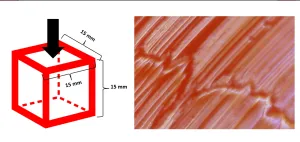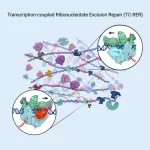(Press-News.org) Question: In your book you argue the suicidal are oppressed by structural suicidism, a hidden oppression.
Alexandre Baril: “I coined the term suicidism to refer to an oppressive system in which suicidal people experience multiple forms of injustice and violence. Our society is replete with horrific stories of suicidal individuals facing inhumane treatment after expressing their suicidal ideations. The intention is to save their lives at all costs and interventions range from being hospitalized and drugged against their will, to being handcuffed and shot by police, to losing their jobs, to having their parental rights revoked, to even being kicked off university campuses. Thus, suicidal people often remain silent and complete their suicide without reaching out to anyone.”
“Worse, I argue that suicide prevention services do more harm than good. Simply put, suicide prevention often increases deaths by suicide rather than prevents them. This is especially true for marginalized suicidal people such as Indigenous, racialized, homeless, poor, queer, trans, disabled, neurodiverse and Mad individuals, for whom suicide intervention often increases the racist, colonialist, classist, sexist, heterosexist (or homophobic), cisgenderist (or transphobic), ableist and sanist violence they experience. My thesis is that suicidal people are oppressed by suicidism and the oppression they experience remains under-theorized.”
Q: Support for suicidal persons is not working. Please explain why that is.
AB: “Suicide statistics remain relatively stable and have not improved significantly over the past decades. Despite decades of multiple strategies and billions of dollars invested in outreach initiatives, studies show that those most determined to die carry out their suicidal plans without reaching out for help. In sum, our prevention strategies do not work.”
“My work found current prevention services generally fail to connect with suicidal people, who do not feel safe asking for help. This silencing effect, due to suicidist consequences (experiencing forms of harm when revealing suicidal plans) leads suicidal people to not feel supported to share their distress.”
Q: You believe that offering assistance in dying to suicidal patients would better prevent unnecessary deaths. How?
AB: “The most radical idea of my book is to theorize suicide as a positive right that would involve supporting suicidal people in their quest for death through assisted suicide. This support would be delivered through a suicide-affirmative approach. This might save more lives than current prevention strategies.”
“This non-stigmatizing approach would provide suicidal people with the chance to speak freely and to benefit from an accompaniment process to reach an informed decision about their desire to live or die. My approach has the potential to drastically reduce rates of suicidality, particularly among marginalized groups, by opening channels of communication with people who are currently too afraid to reach out for help.”
“Even for the small minority of people who would go ahead with an assisted suicide, they would have a less lonely and violent death and a relational process of dying that would also be less traumatic for family and friends.”
Q: Should this idea ever come to fruition, what kind of impact would you expect to see? How would this influence a person’s suicidal ideation?
AB: “My approach is a radical de-stigmatization of suicidality. Slogans such as ‘Speak Up, Reach Out’ or ‘Let’s Talk’ urge suicidal people to share their distress. But suicide prevention services send a paradoxical message since those who open their hearts often experience harm, forced treatments, and rights violation in the name of care and of saving vulnerable people from themselves, all because suicide is never an option.”
“Through my approach, suicide becomes an option, one that should be carefully thought through within an accompanied process during which various options would be seriously considered to help the person make an informed decision. By removing the suicidist violence suicidal people experience when they share their suicidal ideations and plans, and by supporting the assisted suicide of the person if they determine that this is indeed the best option for them, suicidal people would finally feel safe to speak up, reach out for help and talk about their distress. In my approach, the priority is the suicidal person, not life itself. Instead of completing their suicide without speaking with anyone, they would be accompanied as they contemplate making this crucial decision, weighing all the pros and cons, informing their relatives and family members, and preparing for this passage from life to death.”
Q: Are there examples of this model working elsewhere in the world?
AB: “There has never been a model such as this before. Throughout history, some philosophers, bioethicists and thinkers have promoted the right to die by suicide, but it’s always a negative right. Those in favor of a positive right to die limit this exclusively to the context of assisted death in the case of disability/sickness/illness.”
“My work questions why we offer assistance in dying to people who, in the vast majority of cases, don’t want to die and ask for better living conditions. And those who do want to die, such as suicidal people, are denied any assistance and are forced to die alone in atrocious conditions. If such an idea was adopted, it would lead to a completely different social, political, and legal landscape than the one we are used to. This is an out-of-the-box idea, which invites us to radically rethink both our perspectives on suicide and assisted suicide.”
Q: The inspiration comes from the support that transgender persons receive. Please elaborate on this parallel.
AB: “The positive right to assisted suicide for suicidal people may be new, but my suicide-affirmative approach is inspired by trans-affirmative approaches to rethink the care offered to trans people – not based on forms of control and gatekeeping – but to support their autonomy. My suicide-affirmative approach is anchored in self-determination, informed consent, and harm reduction. Instead of trying to cure trans people of their transness or suicidal people of their suicidality, we develop safer spaces in which we can examine their suicidality with them and discuss a variety of options.“
“A shift from prevention to accompaniment would empower suicidal people. Similarly to a trans-affirmative approach, the suicide-affirmative approach offers care and support through an informed consent model, taking for granted that the expert in the decision to transition—in this case, from life to death—is the person making the decision.”
“Regarding the theorization of suicidism and the rights and recognition of suicidal people, we are currently where trans people were regarding trans rights and recognition in the 1930s. Indeed, everything needs to be imagined, theorized, and transformed, as was the case for trans people several decades ago when transitioning was not even an option. My work constitutes a first step in this direction; it allows us to open our hearts and imaginations regarding the possibility of envisioning suicide and assisted suicide from a different point of view, from the standpoint of suicidal people.”
Baril, Alexandre. (2023). Undoing Suicidism: A trans, queer, crip approach to rethinking (assisted) suicide, Foreword by Robert McRuer, Philadelphia, Temple University Press, 334 pages.
END
Suicide prevention: University of Ottawa researcher proposes assisted dying model to transform prevention
A new book proposes a radical approach to helping suicidal people, asserting that existing suicide prevention services do more harm than good
2023-05-16
ELSE PRESS RELEASES FROM THIS DATE:
The physics of gummy candy
2023-05-16
WASHINGTON, May 16, 2023 – For gummy candies, texture might be even more important than taste. Biting into a hard, stale treat is disappointing, even if it still carries a burst of sweetness. Keeping gummies in good condition depends on their formulation and storage, both of which alter how the molecules in the candies link together.
In Physics of Fluids, by AIP Publishing, researchers from Ozyegin University and Middle East Technical University conducted a series of experiments that explore how changing key parts of the gummy-making process affects the final product, as well as how the candies ...
The economic burden of racial, ethnic, and educational health inequities in the US
2023-05-16
About The Study: According to two data sources, in 2018, the economic burden of health inequities for racial and ethnic minority populations (American Indian and Alaska Native, Asian, Black, Latino, and Native Hawaiian and Other Pacific Islander populations) was $421 billion or $451 billion and the economic burden of health inequities for adults without a 4-year college degree was $940 billion or $978 billion. The economic burden of health inequities is unacceptably high and warrants investments in policies and interventions to promote health equity for racial and ethnic minorities and adults with less than a 4-year college degree.
Authors: Darrell ...
Excess mortality and years of potential life lost among the black population in the US
2023-05-16
About The Study: Based on data from the Centers for Disease Control and Prevention, from 1999 through 2020, the Black population in the U.S. experienced more than 1.63 million excess deaths and more than 80 million excess years of life lost when compared with the white population. After a period of progress in reducing disparities, improvements stalled, and differences between the Black population and the white population worsened in 2020.
Authors: Harlan M. Krumholz, M.D., S.M., of the Yale School of Medicine ...
Engineers design sutures that can deliver drugs or sense inflammation
2023-05-16
CAMBRIDGE, MA -- Inspired by sutures developed thousands of years ago, MIT engineers have designed “smart” sutures that can not only hold tissue in place, but also detect inflammation and release drugs.
The new sutures are derived from animal tissue, similar to the “catgut” sutures first used by the ancient Romans. In a modern twist, the MIT team coated the sutures with hydrogels that can be embedded with sensors, drugs, or even cells that release therapeutic molecules.
“What we have is a suture that ...
Integration of AI decision aids to reduce workload and enhance efficiency in thyroid nodule management
2023-05-16
About The Study: The results of this diagnostic study involving 16 radiologists and 2,054 ultrasonographic images suggest that an optimized artificial intelligence (AI) strategy in thyroid nodule management may reduce diagnostic time-based costs without sacrificing diagnostic accuracy for senior radiologists, while the traditional all-AI strategy may still be more beneficial for junior radiologists.
Authors: Wei Wang, M.D., Ph.D., of Sun Yat-sen University in Guangzhou, China, is the corresponding author.
To access the embargoed study: Visit our For The Media website at this link ...
Use of immunization information systems in ascertainment of COVID-19 vaccinations for claims-based vaccine safety and effectiveness studies
2023-05-16
About The Study: The findings of this study of 5.1 million individuals suggested that supplementing COVID-19 claims records with Immunization Information Systems vaccination records substantially increased the number of individuals who were identified as vaccinated, yet potential under-recording remained. Improvements in reporting vaccination data to Immunization Information Systems infrastructures could allow frequent updates of vaccination status for all individuals and all vaccines.
Authors: Karen Schneider, Ph.D., of OptumServe Consulting in Falls ...
Estimated rates of incident and persistent chronic pain among US adults
2023-05-16
About The Study: In this analysis of nationally representative survey data, the incidence of chronic pain was high compared with other chronic diseases and conditions for which the incidence in the U.S. adult population is known, including diabetes, depression, and hypertension. This comparison emphasizes the high disease burden of chronic pain in the U.S. adult population and the need for both prevention and early management of pain before it can become chronic, especially for groups at higher risk.
Authors: Richard L. Nahin, M.P.H., Ph.D., of the National Institutes of Health in Bethesda, Maryland, is the corresponding author.
To access ...
Moving from distressed areas to better-resourced neighborhoods improves kids’ asthma
2023-05-16
Children whose families participated in a program that helped them move from distressed neighborhoods to areas with lower rates of poverty and better public resources like schools and parks experienced significant improvements in severe asthma episodes, according to a new study led by a researcher at Dell Medical School at The University of Texas at Austin.
The study, published today in the Journal of the American Medical Association, involved 123 children, ages 5 to 17, with persistent asthma whose families took part in a six-year housing mobility program in Baltimore.
Before ...
Researchers reveal DNA repair mechanism
2023-05-16
A new study adds to an emerging, radically new picture of how bacterial cells continually repair faulty sections of their DNA.
Published online May 16 in the journal Cell, the report describes the molecular mechanism behind a DNA repair pathway that counters the mistaken inclusion of a certain type of molecular building block, ribonucleotides, into genetic codes. Such mistakes are frequent in code-copying process in bacteria and other organisms. Given that ribonucleotide misincorporation can result in detrimental DNA code changes (mutations) and DNA breaks, all organisms have ...
Three professional societies unite on National Science Foundation grant in effort to increase access and inclusivity in ornithology
2023-05-16
CHICAGO — May 16, 2023 — The landscape of science is changing: People from increasingly varied backgrounds, identities, cultures, and genders are pursuing careers in STEM (science, technology, engineering, and mathematics) fields. Support for this more diverse population of scientists needs to extend beyond “one size fits all” to better meet the needs of today’s scientists. Expanding support and strengthening the sense of community for individuals and groups who have not been historically welcomed in a discipline can foster a deeper sense of belonging and meaningfully broaden representation within that field. Researchers ...
LAST 30 PRESS RELEASES:
Statins significantly reduce mortality risk for adults with diabetes, regardless of cardiovascular risk
Brain immune cells may drive more damage in females than males with Alzheimer’s
Evidence-based recommendations empower clinicians to manage epilepsy in pregnancy
Fungus turns bark beetles’ defenses against them
There are new antivirals being tested for herpesviruses. Scientists now know how they work
CDI scientist, colleagues author review of global burden of fungus Candida auris
How does stroke influence speech comprehension?
B cells transiently unlock their plasticity, risking lymphoma development
Advanced AI dodel predicts spoken language outcomes in deaf children after cochlear implants
Multimodal imaging-based cerebral blood flow prediction model development in simulated microgravity
Accelerated streaming subgraph matching framework is faster, more robust, and scalable
Gestational diabetes rose every year in the US since 2016
OHSU researchers find breast cancer drug boosts leukemia treatment
Fear and medical misinformation regarding risk of progression or recurrence among patients with breast cancer
Glucagonlike peptide-1 receptor agonists and asthma risk in adolescents with obesity
Reviving dormant immunity: Millimeter waves reprogram the immunosuppressive microenvironment to potentiate immunotherapy without obvious side effects
Safety decision-making for autonomous vehicles integrating passenger physiological states by fNIRS
Fires could emit more air pollution than previously estimated
A new way to map how cells choose their fate
Numbers in our sights affect how we perceive space
SIMJ announces global collaborative book project in commemoration of its 75th anniversary
Air pollution exposure and birth weight
Obstructive sleep apnea risk and mental health conditions among older adults
How talking slows eye movements behind the wheel
The Ceramic Society of Japan’s Oxoate Ceramics Research Association launches new international book project
Heart-brain connection: international study reveals the role of the vagus nerve in keeping the heart young
Researchers identify Rb1 as a predictive biomarker for a new therapeutic strategy in some breast cancers
Survey reveals ethical gaps slowing AI adoption in pediatric surgery
Stimulant ADHD medications work differently than thought
AI overestimates how smart people are, according to HSE economists
[Press-News.org] Suicide prevention: University of Ottawa researcher proposes assisted dying model to transform preventionA new book proposes a radical approach to helping suicidal people, asserting that existing suicide prevention services do more harm than good


